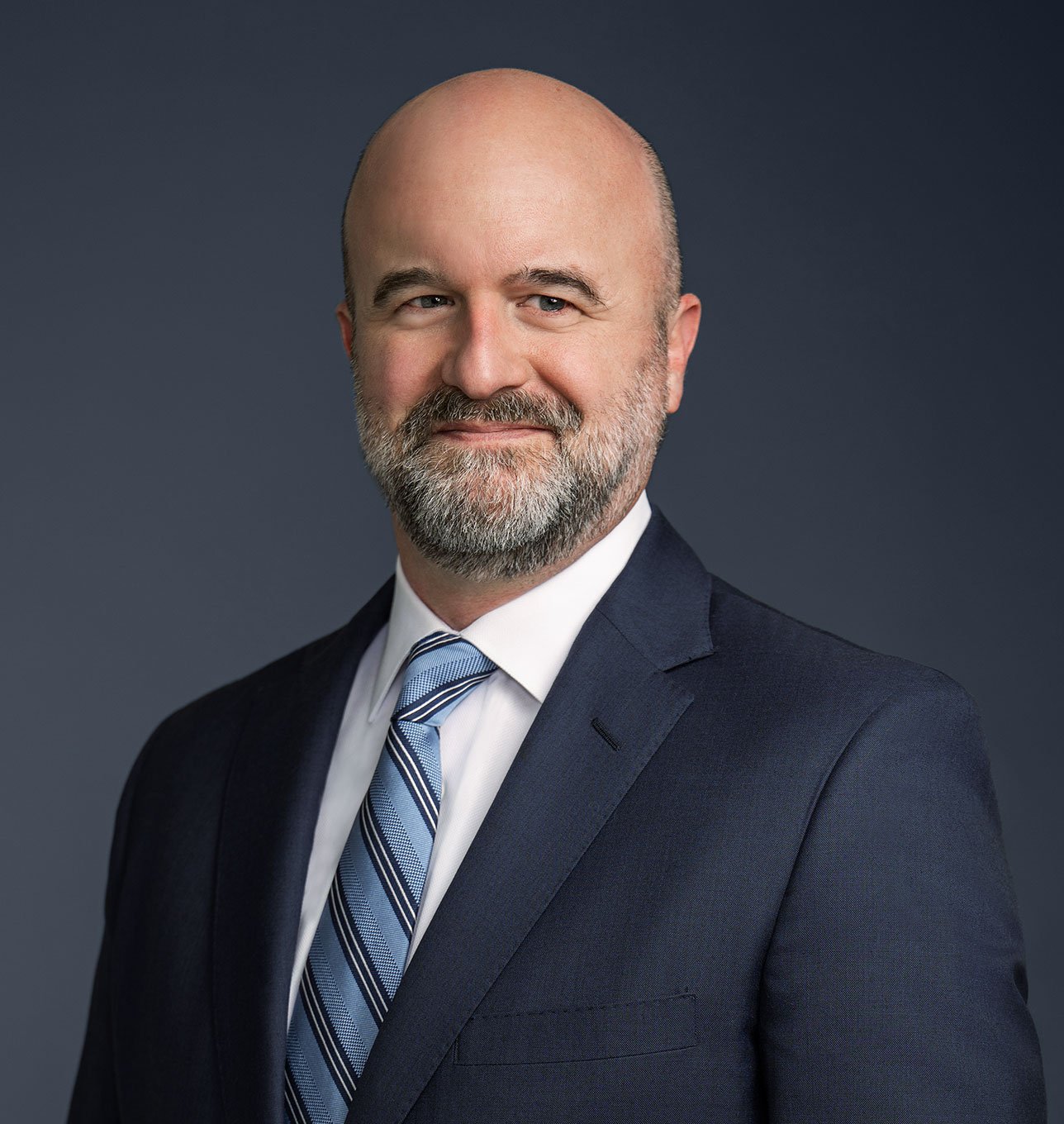MSR Fund Investments: 7 Aspects to Consider
While residential mortgage lenders are facing tough headwinds driven by rising interest rates and low housing volume, the current market presents opportunities for savvy investors looking at mortgage servicing rights (“MSRs”). The current mortgage market is supported by non-bank mortgage originators and servicers who lack the same access to capital and liquidity as traditional banks. To continue growing, non-bank entities have had to be creative with respect to capital sources.
Non-bank owners of MSRs are seeking asset-specific alternative private capital vehicles to fund MSR portfolios. However, unlike whole mortgage loans, MSRs cannot be easily created and sold to investors. Fortunately, through creative thinking and structuring, investors are able to use non-bank, non-servicer, alternative capital sources to participate in the economics of MSRs. This article provides an overview of the phases and areas of consideration related to private capital vehicles that offer investment opportunities in MSRs.1
1. State and Federal Agency Approvals
When investing in MSR assets, a threshold consideration is ensuring that the entity holding the loans and MSRs, as well as the entity that is engaged in the mortgage servicing activities, holds the requisite state licenses and federal approvals to hold such assets and engage in such activities. Each investing strategy for these assets brings with it state licensing and other considerations that need to be evaluated at the outset of the investment. If the goal of the investment is to be directly involved in mortgage servicing, then one needs to invest in a mortgage servicer or an entity that is authorized to purchase and hold residential mortgage loans and the associated MSRs. These entities may be created or acquired, and each option comes with unique investment considerations from a licensing perspective. In either circumstance, the planning for and timing of these licensing and approval considerations are crucial for a successful investment.
State Licenses
Any entity purchasing or holding residential mortgage loans or MSRs or engaging in residential mortgage loan servicing needs to evaluate the state licensing requirements that may apply.
A significant and growing number of states require a license to purchase, acquire or hold a residential mortgage loan even if the purchaser or holder does not hold MSRs or engage in actual servicing activities. Certain states also require a license to hold MSRs even if the actual servicing activities are outsourced to a third-party mortgage loan servicer, while other states require a license to engage in mortgage servicing activities.
To acquire these licenses, the entity must meet each state’s requirements, which can include submitting audited financial statements, creating policies and procedures regarding the licensable activities, establishing in-state offices and designating qualified individuals who have the requisite industry experience to meet each state’s specific criteria to engage in the licensable activity. The application process may also require officers and directors to complete personal disclosures, which may include personal financial statements and fingerprints and can be burdensome and intrusive. Depending on the jurisdiction, personal disclosures may be required from individuals holding more than the requisite threshold of indirect ownership interests of the licensee and/or of an entity seeking to acquire an interest in a licensee. Once the requisite state licenses are obtained, the licensed entity will be subject to certain additional requirements, including certain business practice requirements, such as maintaining books and records, maintaining the requisite net worth, filing quarterly and annual reports with the regulator and renewing the license annually. The licensed entity will also be subject to regulatory supervision and examination by each state regulator.
Federal Agency Approvals
If the goal is to invest in MSRs involving loans sold to or securitized by government-sponsored entities Fannie Mae or Freddie Mac (the “GSEs”) or loans in Ginnie Mae pools, the entity purchasing, acquiring or holding residential mortgage loans or engaging in loan servicing activities will also need to secure approvals from the GSEs and Ginnie Mae to engage in these activities even if the purchaser will not engage in actual servicing activities. These approvals also require the entity to, among other things, provide audited financial statements, demonstrate compliance with the investor’s minimum capital and liquidity requirements, and demonstrate the requisite operating history.
Existing Entity Acquisition
Given the hurdles associated with obtaining the state licenses and federal approvals required to purchase and hold residential mortgage loans, either alone or with the MSRs, and potentially engage in actual mortgage servicing activities, many entities explore the acquisition of an existing entity that already holds the required licenses and/or approvals. This strategy comes with its own set of licensing considerations. First, the entity will be subject to “change of control” approval as it relates to Ginnie Mae, the GSEs and certain state residential mortgage finance licensing laws, which may require personal disclosures of the ultimate indirect owners of the licensee. Depending on the jurisdiction, even acquisition of non-voting stock or non-voting equity interest investments may be subject to these requirements. The determination of whether the change of control provisions apply may be based on the form of the licensee’s organization or entities in the chain of ownership. Debt structures also may warrant change of control analysis depending on the extent of the debt holder’s ability to exercise control over or directly manage the policies of the licensee. Any changes to the existing entity’s name as a result of the purchase or restructuring may also require regulatory filings or approvals. While several jurisdictions require only advance notice of such changes of control, some important jurisdictions, including New York, and certain federal agencies require prior approval, which can take additional time to secure.
Agency Cross Default Provisions
Finally, depending on how the proposed investment will be structured, the parties may need to consider whether the GSE or Ginnie Mae cross default provisions will apply. The Ginnie Mae Mortgage-Backed Securities Guide (the “Ginnie Mae Guide”), Fannie Mae’s Selling and Servicing Guides, and Freddie Mac’s Seller/Servicer Guides (together with the Ginnie Mae Guide, the “Guides”) include cross default provisions applicable to parties under common ownership or control. The cross default provisions provide that a default under the applicable Guide or servicing agreement by one entity may be deemed to be a default with respect to another entity under common ownership or control. The determination as to what constitutes common ownership or common control varies among Ginnie Mae and the GSEs and, therefore, is an important consideration to evaluate for an acquiring entity that is already invested in MSRs within its structure. In addition to the cross default provisions set forth in the Ginnie Mae Guide, Ginnie Mae in the past has exercised its discretionary authority to limit or prohibit common ownership or control of multiple issuers with the same issuer approval type regardless of whether the parties enter into a cross default agreement.
2. “Build” or “Buy” Strategies
In consideration of the licensing and approvals requirements noted above, investors in MSR funds often debate whether to form a new entity and obtain licenses on a de novo basis (the “build” strategy) or acquire an existing licensed entity through a stock or equity purchase (the “buy” strategy). Each approach carries advantages and disadvantages.
Build
The “build” approach has been popular based primarily on timing considerations and execution speed. An investor interested in the de novo licensing approach is likely to need 12 to 24 months to ramp up to full operating capacity, including licensure in a material number of states and Ginnie Mae or GSE approvals. During this time, the investor would identify a management team, inject capital into the entity and ramp up operations on a rolling basis upon receipt of state and agency approvals.
Buy
By contrast, an acquisition generally may be consummated in 6 to 8 months (assuming that the target entity does not hold licenses in New York). During that time, an investor would identify a target entity with the desired state and federal licenses, perform due diligence, negotiate definitive purchase documents, obtain regulatory “change of control” approvals and close the acquisition.
Weighing the Two Approaches
While the “buy” strategy allows for increased speed to execution, the investor should carefully consider the potential for legacy liabilities associated with the target. In equity transactions, a buyer assumes the assets and liabilities associated with an acquired entity. Buyers may face claims post-closing arising from events pre-closing, including loan repurchases or legacy employment claims. Legacy liability risk may be mitigated through legal due diligence as well as indemnity protections in the definitive agreements from a well-capitalized indemnitor. Legacy liability risk is typically not a concern with the “build” approach if licenses are obtained de novo and operations are built organically because a newly formed entity would not have the same “tail liability” arising from prior operations.
Legal and licensing fees are likely to be higher for a “buy” versus “build” approach as a result of expenses related to due diligence, negotiation, drafting and “change of control” approvals. When investors consider the pros and cons of build/buy strategies, such costs and potential legacy liability exposure are often weighed against the speed of execution presented by a stock or equity deal.
3. Alternative Arrangements
Establishing or acquiring a licensed and agency-approved servicer can be costly and time-consuming. As a result, investors may look to alternative approaches to MSR investments, either during the setup period or permanently. Generally, these consist of entering into contractual arrangements with third-party or affiliated servicers pursuant to which the servicer acquires and retains the related MSRs, but the economics associated with holding the MSRs are transferred to the investor. Generally, these types of arrangements expose the investor to additional risks related to the servicer counterparty, such as bankruptcy risk, the risk of termination of the related MSRs and other operational counterparty risks.
Excess Servicing
The most common way to accomplish this economic transfer is by the sale of the “excess servicing” to the investor, pursuant to which the servicer sells an economic participation interest in a portion of the servicing income to the investor. These arrangements can be secured by a security interest in the related MSRs and must be approved by Fannie or Freddie, in the case of GSE MSRs, and Ginnie, in the case of arrangements that are secured by the related MSRs. The agencies impose several requirements and restrictions on the related terms as a condition of this approval, including limiting the size of the portion of the servicing fee income that can be sold. As result of these limitations, excess servicing sales are an imperfect proxy for the entire economics of the MSRs because the portion of the servicing fee that the servicer is required to retain is still often significantly greater than the cost of servicing. Since the agencies prohibit any further participation interests (or other interests in the MSRs) being sold to the investor, the remaining economics will need to be transferred pursuant to unsecured contractual arrangements, usually between the parent of the servicer and the investor. These can include preferred shares or tracking stock in the servicer or its parent, credit-linked notes or other derivative-type instruments pursuant to which the investor, in exchange for an upfront payment to the servicer or its parent, is entitled to receive ongoing payments approximating the economics of the remaining portion of the MSRs and generally calculated based on the difference between the servicing fee income received by the servicer with respect to the MSRs, on one hand, and the cost of servicing and the excess servicing fee sold to the investor, on the other hand.
4. Use of Fund Structures
Given the complexity of investing in mortgage servicing rights, formation of a private investment vehicle is a good option to bring together servicers and investors. A typical structure involves setting up a Delaware limited partnership or limited liability company as a pooled investment vehicle or “fund“ that is managed by an investment adviser (an “IA”) or its subsidiary. The IA enters into an investment management agreement with the fund to provide advice with respect to the making of investments. A fund structure allows the IA to interface with counterparties related to the underlying investments on behalf of fund investors. It also offers the fund investors limited liability protection under Delaware law and comfort through the regulatory oversight of the IA by the Securities and Exchange Commission and fiduciary obligations of the IA arising under the US Investment Advisers Act of 1940, as amended (the “Advisers Act”).
Investment Adviser Compensation
A fund formed to invest in MSRs will look much like any private pooled investment fund formed to invest in a specific type of asset. Generally, the IA will be entitled to receive both a management fee and carried interest or other form of performance compensation from the fund. The market terms for fees and performance compensation can vary; it is common to see management fees based on a percentage of invested capital, but fees may also be based on net asset value of the portfolio or other measures. Performance compensation may be structured as a traditional carried interest taken out of profits of the fund once the investor achieves a certain IRR or a preferred return performance threshold.
Governance Terms
As with any private investment fund, the IA and the investor(s) will need to agree on general governance terms. Two primary areas of negotiation are how much discretion the IA will have over the fund and the underlying investments and what rights the investors have to terminate the relationship with the IA. In a “fund of one” separately managed account structure, the investor is more likely to retain tighter control over approval of investments and other investment terms and lower-tier service providers than in a pooled investment vehicle with multiple investors. Such rights may extend to reporting and other information the IA is obligated to deliver to the investor. Similarly, a single investor will likely have more meaningful rights to remove the IA or terminate the fund than in a pooled investment vehicle, which would require more parties to agree. Because margins on MSR investments can be narrow, investors typically retain more control over expenses that can be incurred by the fund—often through an annual cap on expenses or a budget approval process—than they would have in funds investing in other asset classes.
Investment Adviser Obligations
The IA advising the fund will want to make sure that the fund documents contain provisions allowing it to meet its obligations under the Advisers Act. For example, if an affiliate of the IA is either warehousing investments for the fund or serving as an intermediary when purchasing the underlying MSRs, the IA will need to satisfy the principal transaction restrictions under the Advisers Act. This can be accomplished by building in a requirement of investor consent for those specific transactions or a batch consent-type structure where approval is given for transactions within certain parameters. If the IA is advising more than one client investing in MSRs, the IA will need to make sure that the investments allocated to each client are done so on a fair and equitable basis over time or that the client who is not given equal or priority access to investment opportunities has specifically consented to the process by which it will be allocated investments.
5. Fund Leverage
Of course, it may be desirable to lever the fund investments in hopes of boosting the return to investors. There are several ways to do this.
Subscription Financing Facilities
First, the fund can enter into a subscription financing facility, which is secured by the capital commitments of the various investors. These arrangements are fairly common in the funds space and do not depend in any material respect on the type on investments made by the fund.
MSR-Backed Financing Facilities
In addition to or instead of a subscription financing facility, the fund could enter into an MSR-backed financing facility. MSRs are generally difficult assets to finance because of their nature as collateral. They are difficult to value, difficult to foreclose on and can evaporate if the servicer breaches its obligations under the servicing agreement. Nevertheless, MSR financings are fairly common and range in complexity from relatively simple bilateral credit agreements secured by a lien on the MSRs or the servicing income to fairly complicated securitization-like structures pursuant to which the servicer sells excess servicing rights to a special purpose master trust that issues variable funding notes to bank lenders and term notes to capital markets investors that are secured by the related MSRs.
In the federal agency MSR context, a key document is the related agency acknowledgment agreement, entered into by the applicable agency, the servicer and the lender or collateral agent, depending on the context. Pursuant to the acknowledgment agreement, the lender will agree that its interest in the MSR collateral is subordinated to the interests of the applicable agency. The acknowledgment agreement will also set forth the procedures for foreclosing on the collateral in the event of a default under the facility.
Servicing-Advance Facilities
Finally, funds may consider servicing-advance facilities to finance the obligation to make servicing advances required by the MSR. Servicing advances are cash advances by the servicer on behalf of the borrower to cover delinquent mortgage, tax, insurance and escrow payments. Servicing advances are significantly better collateral than MSRs. Compared to MSRs, their eventual repayment is relatively certain and the right of reimbursement, at least to a certain extent, survives the termination of the servicer under the servicing agreement. The most common way to finance servicing advances is by selling the servicing advance receivables to a bankruptcy-remote special purpose master trust that issues one or more advance-backed variable funding notes to one or more bank lenders and that may also issue term notes to capital market investors.
6. Servicing Rights Purchases
Whether an investor will take ownership of MSRs directly through its own approved servicer or will invest in the MSRs indirectly though purchases of “excess servicing” or other structures, someone will need to obtain the desired MSRs.
Origination or Acquisition
If the investor controls a mortgage loan origination platform, the investor may create MSRs when it delivers the applicable whole loans to investors on a servicing-retained basis. Owning an origination platform may provide an investor with a controllable and predictable source of MSRs.
On the other hand, an investor may prefer to focus on its investment in the MSR asset and not take the regulatory and business risks associated with operating an origination business. If so, the investor will need to enter into agreements with third-party sellers of MSRs. There are two principal types of transactions for acquiring MSRs: one-time “bulk” purchases and “flow” transactions under which sellers deliver newly created MSRs on an ongoing basis over a period of time.
Bulk Purchases and Sales
In a bulk transaction, the seller puts a specific portfolio of MSRs out to bid, and prospective buyers review the provided data and perform other due diligence on the loans. The buyers may decide which MSRs to buy and the price that they are willing to pay. Because a bulk sale involves an existing MSR portfolio, it may include loans with less desirable characteristics. For example, some loans may be delinquent, in foreclosure or in bankruptcy. These loans will cost more to service. Compounding that cashflow problem, the owner of the MSRs will not receive a servicing fee for these loans during periods of delinquency because the servicing fee is paid from the collections on the loans, and there are no current collections on those loans. The servicer will also need to fund and carry the servicing advances on these loans.
A bulk offering may include those less-desirable MSRs, but buyers may have the opportunity to exclude them, depending on the terms of the transaction. However, a buyer may not exclude undesirable MSRs from a bulk purchase of Ginnie Mae MSRs because Ginnie Mae requires all of the MSRs backing a securitized pool of loans to be sold together, so a buyer has to take any problematic loans in a pool along with the performing loans.
A bulk transaction typically has a number of procedural steps. First, there’s a sale date on which the economic benefits of the MSRs are transferred and a significant portion of the purchase price is paid. Then an interim servicing period follows, during which the seller of the MSRs continues to perform the servicing of the loans for the benefit of the buyer. The interim servicing period ends with a transfer date, when the seller physically transfers the servicing work to the buyer or its subservicer, which includes transfers of loan data, loan documents and custodial funds and notices to borrowers and other relevant parties. In addition, on or shortly after the transfer date, the buyer makes another payment of a smaller portion of the purchase price and reimburses the seller for the advances on the loans. Those include advances of principal and interest made to the investor in the loans when borrowers do not make payments, payment of taxes and insurance that have not been funded by the borrower, and expenses related to actions taken to preserve the value of the loans or to foreclosure in the event of loan delinquencies and defaults.
Flow Purchases and Sales
A flow transaction, by contrast, involves a commitment of the parties to buy and sell MSRs related to newly originated loans in the future. The loans and MSRs don’t exist at the time the parties enter the agreement, so there is no existing portfolio for the buyer to review and price. The buyer may review the seller’s historic origination of loans to get a sense of what it may deliver in the future. Moreover, the buyer may include terms and limitations in the agreement that will set parameters and requirements for the MSRs that should be delivered. Those terms, often called the “buy box,” typically include a pricing matrix that provides pricing multiples and adjustments to properly value the MSRs based on their characteristics and incentivize the delivery of the types of MSRs the buyer prefers. Although it’s difficult to review and set pricing for flow purchases, flow transactions avoid the issue of delinquent, defaulted, foreclosure and bankruptcy loans. All the loans in a flow transaction will be new originations and generally need to be performing in order to be sold to or pooled with an investor.
Within the category of flow transactions there are two types. One type is typically referred to as a “mini-bulk” or “forward bulk” sale—which operates as a series of smaller bulk transactions, each with the separate steps of a sale date, interim servicing period and a transfer date but occurring on a repeated basis over a period of time. For example, a “mini-bulk” transaction may call for monthly sale dates of the MSRs related to loans sold to or pooled with the investor during the preceding month, followed by quarterly transfer dates for the physical transfer of the MSRs sold over the preceding quarter.
The other type of flow transaction is generally referred to as a “co-issue” MSR purchase. (The agency investors in the loans use different terms for these sales.) In a co-issue transaction, the seller delivers the MSRs to a buyer simultaneously with the sale or pooling of that loan with a given investor. That may be attractive to sellers because it provides a “one-stop shop” for the disposition of the loan asset and MSR. The seller never has to service the loan for the investor, and the seller doesn't need to deal with the multiple steps and interim servicing obligations needed in bulk or mini-bulk sales. Indeed, each of Fannie Mae and Freddie Mac have programs to further simplify and expedite these transactions by facilitating unified data exchange and payment structures, and these programs have become increasingly popular in recent years.
For a buyer, however, a co-issue sale presents an unusual circumstance in that the buyer does not know what it is purchasing until the loan and MSR have been delivered. Because the seller is making decisions on which loans to sell or pool on a day-to-day basis, the seller may not know what MSRs it has acquired until the time of sale, or even after the sale. In addition, in a co-issue sale, the buyer takes over the physical servicing immediately upon the delivery of the loan to the investor, or nearly so. There is no investor-recognized interim period of servicing, and all documents and data on the loans have to be transferred very quickly.
There is one other aspect of purchases of Fannie Mae and Freddie Mac MSRs that many readers will be familiar with but may be surprising to new investors in MSRs: A buyer of Fannie Mae and Freddie Mac MSRs generally assumes liability to those agencies for all of the origination, sale, pooling and prior servicing of the related loan. There are some exceptions to that rule, involving what is referred to as a “bifurcation” of those liabilities. Those exceptions rely on specific programs or special approvals from Fannie Mae and Freddie Mac, however, and while increasingly popular, “bifurcated” transactions still make up a minority of sales.
Assuming the parties don’t arrange a bifurcated transaction, the buyer of the MSRs inherits responsibility to the investors for all there were errors in the origination, sale, pooling or prior servicing, and Fannie Mae and Freddie Mac will first look to the current owner to satisfy the related repurchase, indemnification and make-whole remedies. A buyer of MSRs should, of course, have matching remedies back against the seller of the MSRs under its purchase agreement, but those remedies will be of little use if the seller no longer exists when they remedies are needed. This is an especially significant concern in light of the more difficult current economic environment for originators and servicers.
7. Subservicing
The other principal transaction for many MSR owners is a subservicing agreement. The MSR owner may, of course, perform the servicing of the loans itself. Investors in MSRs may prefer to operate a servicing business, opting to instead outsource the day-to-day servicing work associated with the mortgage loans. However, the owner of MSRs may not simply delegate the servicing obligations to a subservicer and ignore the servicing work given its economic obligations and the oversight responsibilities imposed by investors and regulators.
Financial Obligations
The MSR owner continues to bear significant economic burdens and risk associated with the MSRs even if it contracts out the day-to-day work. Compensation of subservicers is paid in the form of flat monthly and other fees for each loan and each task performed. Those fees increase as the subservicer has to perform more work on a loan and, therefore, escalate rapidly as the loan becomes more delinquent or enters default, foreclosure or bankruptcy. Meanwhile, as discussed above, those loans do not provide the MSR owner with any servicing fees when payments aren’t made. As a result, there is a significant economic outlay associated with servicing loans as they grow more delinquent. In addition, more and more servicing advances are required as these loans grow more delinquent. While a subservicer will administer the servicing advance process for the MSR owner, the subservicer will require monthly reimbursements or prefunding of those advance amounts. An MSR owner, therefore, retains significant economic risk associated with the performance of the servicing even when outsourced to a subservicer.
Oversight
In addition, there are significant investor and regulatory requirements regarding the oversight of subservicers. The Consumer Financial Protection Bureau and Office of the Comptroller of the Currency and state regulators all require MSR owners to take an active role in the monitoring and oversight of subservicers as consumer-facing vendors. Examinations by these regulators will include a review of the MSR owner’s oversight practices, so even a somewhat passive owner of MSRs that engages a subservicer will need to have internal experts who understand the MSR asset and related loans and who actively oversee and monitor the subservicer’s activities. In addition, for the fund structures discussed above, managers of an MSR investment may need to engage in a certain amount of oversight in order to meet applicable securities and investment advisory requirements.
Refinance Risk and Recapture
One last issue that involves subservicers (but is not limited to context of their use) is refinance risk and potential refinance recapture opportunities. When a loan pays off, the owner of the loan receives the principal balance received and can redeploy that capital. The MSR owner is not as fortunate, however. When that loan pays off, the related MSR asset evaporates and leaves the investor with nothing. Recent increases in mortgage interest rates have made MSRs somewhat less vulnerable to refinance activity, but increased home values have provided borrowers with increased equity that they may want to access through a “cash-out” refinance, supporting a significant level of refinance activity. Smart MSR owners, therefore, actively solicit borrowers for refinancing or other transactions (such as second lien loans or home equity lines of credit) to preserve their MSR assets. In other words, the MSR owner tries to refinance the loans (or provide those other options to tap into equity) and thereby recapture or maintain the MSR asset.
MSR owners who also have an origination platform can, of course, use that origination platform to solicit the borrowers for refinance or other loan products. If the MSR investor has chosen not to operate a loan origination platform, it can’t undertake that activity for itself. If the MSR owner’s subservicer can originate loans, however, it may be possible to leverage that capacity to engage in the necessary refinance or other lending activity. How that can be structured is beyond the scope of this summary. There are numerous regulatory concerns, and the use of a subservicer is not the only option. Fund manager incentive fees are often directly tied to the success of these recapture programs.
Takeaways
Investing in MSRs involves more than merely investing in an income stream. While investors grapple with a complex set of relationships and considerations involving a highly regulated asset class, we find that legal and business issues may be resolved through creative structuring and subject matter expertise.
1 This is an update of an article published on December 21, 2020.







